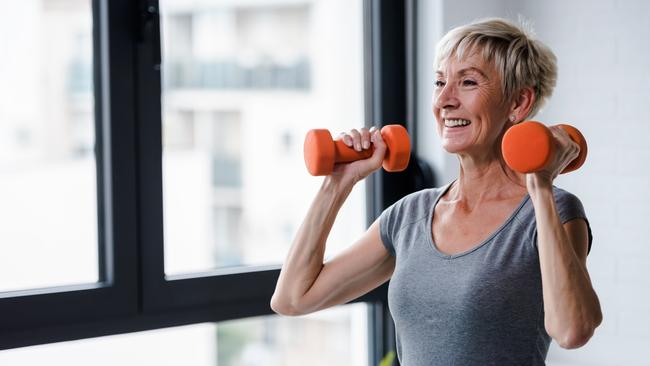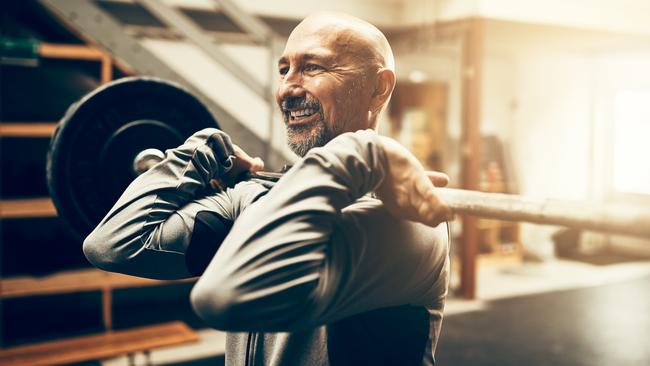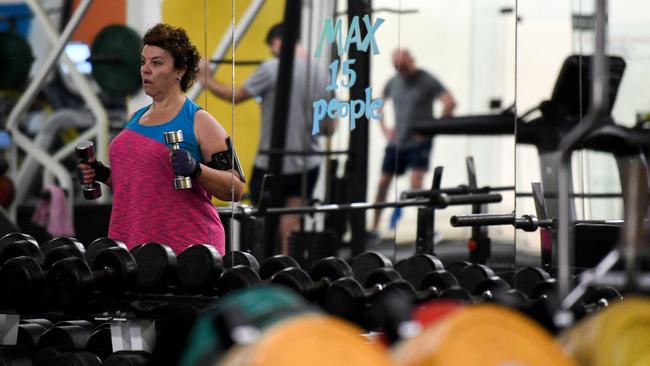Pumping iron: the real key to weight loss (and keeping it off)
It’s not just aerobic exercise that keeps off the pounds – you can burn fat with resistance training.

If you want to lose weight but dread the thought of having to spend hours running or cycling or generally working up a sweat, a new study has good news for you.
Australian scientists have discovered that weight training is just as effective at fighting fat as aerobic exercise is.
Research has shown that people who regularly do aerobic exercise such as running, cycling or swimming lose more weight than sedentary individuals – and keep it off.
They do this by creating a calorie deficit: burning more calories than they consume. Add weights to the equation and the increased lean muscle mass makes for a more efficient metabolism so that fat-burning is intensified.
But in the latest study, researchers at Edith Cowan University insist that if you don’t want to – or can’t – go for a run or a bike ride to shed excess pounds, resistance training will have positive results.
One convert to pumping iron is Victoria Beckham, who last week said in an interview in Grazia magazine that she was lifting heavy weights five or six days a week in her pursuit of “as good a bottom as I can get”.
She is no longer a fan of the skinny look, apparently, but prefers a more sculpted silhouette. “I’ve always been a bit scared of weights, but it turns out I love them,” she said. “I’ve got so much more muscle tone now.”

Reporting in the journal Obesity Reviews, a team led by Pedro Lopez, a scientist at the Exercise Medicine Research Institute at ECU, looked at 114 published trials involving 4184 overweight people to find out if resistance training, combined with calorie cutting, was enough to transform their bodies.
“Usually, aerobic exercise is thought of as the first and only option when people talk about losing weight,” Lopez says. “But the benefits of resistance training are increasingly acknowledged by scientists, and there’s now strong evidence that it can help people to lose weight and fat percentage, maintain muscle mass and lower their BMI.”
In adults who reduced their calorie intake by about 500 a day the effects of regular resistance training were shown to be similar to aerobic exercise in terms of overall improvements. And dieters who used weight training as their sole form of exercise achieved an average 5kg reduction in fat mass and body weight in 12 weeks.
Part of the benefit is down to muscle being a metabolically active tissue that burns calories.
“It is well known that caloric restriction and aerobic exercise can reduce fat and body weight, but also that both of these strategies lead to substantial reductions in lean muscle mass,” Lopez says.
“Our results indicated that weight training could maintain or increase muscle size, even with a deficit in calories, and this means slightly increased metabolism even at rest.”
His findings come soon after another Australian study, which demonstrated that it is possible to lose 1.4 per cent of body fat through strength training alone, matching the amount that can be lost through cardio or aerobics.
Mandy Hagstrom, a senior lecturer in exercise science and exercise physiology at the University of NSW in Sydney, reviewed 58 papers that included cutting-edge body scanning techniques, such as Dexa and CT scans, to measure the outcome of strength-training programs for about 3000 participants.
On average, people worked out with weights two to three times a week for 45-60 minutes over five months, with most losing about half a kilo of fat mass in that time through resistance training. None of the participants was on a diet.

“Resistance training increases muscle mass, and while that contributes to your total daily calorie burning, it’s not the only benefit,” Hagstrom says.
“The greatest effect when it comes to fat loss is likely to be down to the burning of calories through the resistance exercise itself, with more energy then used in repair and growth of muscle tissue, and perhaps some small increases in overall metabolism.”
Emerging evidence suggests there may be other factors at play as well. Scientists at the University of Kentucky and the University of Nebraska-Lincoln recently discovered how weight training triggers muscles to release a cascade of genetic materials that accelerate fat-burning in fat cells.
The finding that lifting weights can help with weight loss is particularly good news for those who are wary about subjecting their joints to the pounding of running or aerobics when they are carrying excess pounds. “It can be uncomfortable, and it’s easier to injure joints and ligaments when you are carrying your whole body weight doing a lot of repetitive aerobic exercise,” Lopez says. “If you are overweight, resistance training might be a better starting point.”
Weight training will help to condition muscles around the joints that are used when you walk, jump, run or cycle.
“There are definite benefits to commencing a new training program with resistance exercise,” Hagstrom says. “If you haven’t done much exercise or have been sedentary, you are going to benefit from strength training before progressing to more intense cardiovascular exercise if you choose to.”
The trainer Harry Jameson says it is compound resistance exercises – those that work large and multiple muscle groups simultaneously – that produce the greatest calorie burn.
“While all-body resistance training is important, if you are short on time you should prioritise big muscle compound movements such as squats and lunges, thrusters and rotational planks to accelerate fat loss from the whole body,” Jameson says.
“Small muscle movements such as the biceps curl have their place but are not the best fat-blasters.”

How heavy the weight you lift is not as important as the effort you put in, Hagstrom says. “If you have a lighter weight but lift it multiple times and are exerting a lot of effort, that’s likely to be as beneficial as a heavier weight lifted fewer times for weight loss,” she says. “And if weight loss is your goal, resistance training three times a week is likely to be enough when combined with appropriate nutrition.”
Consistency too is key. Weight training could help to stave off creeping weight gain from midlife onwards if you stick at it in the long term. People who do resistance training of any kind a few times a week are considerably less likely to become obese when they are older, regardless of whether they do aerobic exercise or not, according to a study published last year in Plos Medicine.
A team from Iowa State University and other institutions tracked the health records of 12,000 middle-aged participants to find out if there was a link between waistline thickening and activity habits over six years. Men and women who did strength training for a total of one to two hours a week were 30 per cent less likely to become obese, based on their waist circumference or body-fat percentage measurements.
None of this means that we should ignore cardio exercise. Jameson says working your heart and lungs, as you would on a power walk or run, remains the best route to improved cardiovascular health.
“Having an exercise program consisting of both aerobic and resistance training would always be the most beneficial scenario for health and fitness,” Hagstrom says.
“But there still seems to be this lingering belief that aerobic exercise is the only way to lose weight, which it is not.”
The Times







To join the conversation, please log in. Don't have an account? Register
Join the conversation, you are commenting as Logout